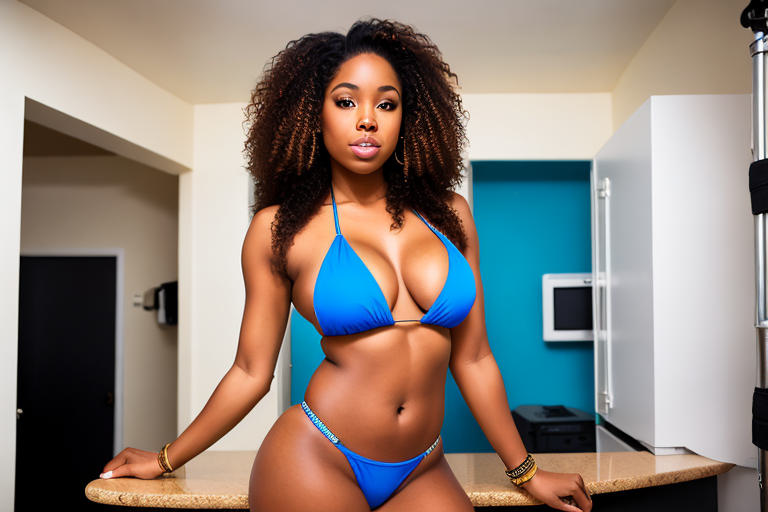In a world where the quest for the ideal body shape never wanes, non-invasive options like coolsculpting, which utilizes laser technology to target fat cells with laser heat, have surged to the forefront of fat reduction treatments, significantly altering the thing we call our body’s appearance. These fat reduction treatment methods promise to whittle away at love handles, flatten abdomen areas, and target subcutaneous fat without going under the knife, offering noticeable fat loss and fat reduction results. Yet, as invasive body contouring techniques continue to evolve, offering more precise results with minimal bruising, it’s essential for anyone considering these procedures to understand how body sculpting targets subcutaneous fat and stacks up against coolsculpting, which uses an applicator for non-invasive fat loss in specific treatment areas. Both boast their unique set of applicators and outcomes; navigating between them requires setting realistic expectations about what sculpting your body shape and achieving fat reduction results in various treatment areas can truly entail.
The landscape of aesthetic enhancements has shifted dramatically; today’s technologies offer paths to sculpt body shape and redefine contours with non-invasive body applicators without significant downtime. Deciphering which option aligns with your goals is key—whether it’s embracing non-invasive body treatments like flat applicators that chill away fat cells or opting for invasive body surgical precision that sculpts your form.
Understanding CoolSculpting and Body Sculpting
Cryolipolysis Technology
CoolSculpting is a specific type of body sculpting. It uses cryolipolysis technology to freeze fat cells. This applicator process targets stubborn fat areas that don’t respond to diet or exercise. During treatment, the applicator cools fat cells until they crystallize and die.
This method is non-invasive with minimal downtime. Patients can return to daily activities quickly after a session, often eager to see their fat reduction results. Results become visible over weeks as the body naturally removes dead cells.
Diverse Techniques
Body sculpting includes various techniques beyond cooling. Some methods use heat, ultrasound, or radiofrequency energy to reduce fat or tighten skin.
Each technique offers different benefits for patients:
-
Heat-based treatments can also target cellulite.
-
Ultrasound destroys fat cells using sound waves.
-
Radiofrequency firms skin by stimulating collagen production.
Patients choose based on their goals and comfort levels with each procedure.
Branded Treatments
It’s important to differentiate between general body sculpting and branded treatments like CoolSculpting. While all aim at contour enhancement, specifics vary widely:
-
CoolSculpting focuses solely on cooling.
-
Other brands may combine technologies for comprehensive results.
Understanding these differences helps in making informed decisions about which treatment suits one’s needs best.
Key Differences Between CoolSculpting and Body Sculpting
Fat Cell Targeting
CoolSculpting is a specialized procedure that freezes fat cells. This method, known as cryolipolysis, causes the cells to die without harming surrounding tissue. Over time, your body naturally processes and eliminates these dead cells.
Body sculpting can involve various techniques other than freezing. These may include heat therapy, ultrasound energy, or radiofrequency. Each technique has its own way of breaking down fat cells.
Session Duration
A typical CoolSculpting session lasts between 35 minutes to an hour per treatment area. It’s relatively quick and you can often return to normal activities immediately after.
In contrast, body sculpting treatments vary in length depending on the method used. Some sessions might be shorter or longer than CoolSculpting sessions.
Treatable Areas
CoolSculpting is very specific about where it can target fat deposits. Common areas include under the chin, thighs, abdomen, and love handles.
Body sculpting methods offer different levels of specificity based on technology used. Some are designed for larger areas while others may focus on smaller spots with precision.
How CoolSculpting and Body Sculpting Work
Cryolipolysis Science
CoolSculpting uses a method called cryolipolysis. This process involves freezing fat cells to the point of death without damaging surrounding tissues or skin. The body then naturally eliminates these dead cells.
Fat cells react to cold temperatures by crystallizing. Once they are frozen during a CoolSculpting session, your body gradually flushes them out. It can take several weeks for this elimination process to complete.
Body Sculpting Mechanisms
Body sculpting technologies apart from CoolSculpting use various mechanisms. Some utilize heat through laser therapy or radiofrequency waves, while others employ ultrasound technology.
Each technique aims to disrupt fat cell integrity, causing cell breakdown and removal via the body’s lymphatic system. For example, laser therapy heats up fat cells until they are too damaged to survive.
Fat Cell Elimination
After treatment with either technology, your body begins a natural process of removing the destroyed fat cells. This is done primarily through the liver which filters out waste products from the bloodstream.
It’s important not just for the immediate effects but also for long-term health that this biological cleanup occurs efficiently after sculpting treatments.
Treatment Areas and Effectiveness of Both Techniques
Targeted Areas
Body sculpting and CoolSculpting target fat reduction in different areas. CoolSculpting often focuses on smaller, specific regions like the abdomen, thighs, or under the chin. It uses applicators to cool tissues to a temperature that breaks down fat cells without harming skin or muscle.
Body sculpting can include various methods such as laser technology or invasive treatments. They may address larger or more varied treatment areas including hips, arms, and back. Some body sculpting procedures involve small incisions to remove fat directly.
Both techniques aim at contouring the body rather than significant weight loss. Patients choose based on their needs and desired treatment area.
Effectiveness Comparison
CoolSculpting is known for its effectiveness in eliminating stubborn fat pockets that resist diet and exercise. The cold temperatures target only fat cells which then leave the body naturally over time.
Other body sculpting options might use laser heat to liquefy fat before it’s removed from the patient’s body through natural processes. These methods are also effective but may require more recovery time due to their invasive nature.
Results vary by individual but both have high success rates among patients seeking targeted fat reduction without surgery.
Results Timeline
Visible results from CoolSculpting can take several weeks as the body gradually flushes out destroyed fat cells. Most patients see full benefits after two months with some noticing changes as early as three weeks post-treatment.
In contrast, certain invasive treatments within the scope of body sculpting provide quicker results since they often remove a greater volume of fat at once. However, because these treatments may be surgical in nature, there is typically downtime involved for recovery.
The timeframe for visible outcomes depends largely on each patient’s unique physiology and chosen procedure specifics within their treatment plan.
Risks and Side Effects Comparison
CoolSculpting Discomfort
CoolSculpting works by freezing fat cells. This can cause short-term discomfort. The cold may lead to sensations like pulling, tugging, or mild pinching during the procedure. Afterward, patients might experience temporary redness, swelling, bruising, tingling, or numbness in the treated area.
Most of these side effects are minor and resolve on their own. For example, numbness usually fades within a few weeks. It is rare for these symptoms to last longer or develop into serious complications.
Body Sculpting Side Effects
Body sculpting includes various methods like heat-based treatments and ultrasound energy. Each method has its own set of potential side effects.
Heat-based treatments may lead to warmth in the treated area or slight burns if not done correctly. Ultrasound methods could cause a bit of discomfort during treatment as well.
It’s crucial to follow all post-treatment instructions given by your healthcare provider to minimize risks after any body sculpting procedure.
Adverse Reaction Likelihood
The likelihood of adverse reactions varies between body sculpting options.
-
CoolSculpting: Rarely causes severe side effects; most issues are mild and transient.
-
Other body sculpting techniques: Can have different risk profiles depending on technology used; always consult with a professional about specific risks associated with each option.
In general, following pre-and post-care guidelines greatly reduces the chance of adverse reactions no matter which body contouring technique you choose.
Invasiveness and Recovery Period Analysis
Non-Invasive Nature
CoolSculpting and most body sculpting treatments share a common advantage: they are non-invasive. This means no cuts, needles, or anesthesia are typically required. CoolSculpting uses controlled cooling to target and eliminate fat cells without surgery. Similarly, other body sculpting procedures might use heat, sound waves, or laser energy to achieve results.
Patients often prefer these methods because they involve less risk than surgical alternatives like liposuction. For instance, with CoolSculpting you can read a book or even nap during the procedure. The ease of treatment is clear when compared to invasive surgeries that require preparation and recovery time in a hospital setting.
Downtime Expectations
After undergoing non-invasive body contouring treatments:
-
Patients usually return to normal activities immediately.
-
Some may experience redness or mild swelling.
-
No need for extended rest unless advised by the practitioner.
The lack of significant downtime is a huge plus for those with busy schedules who cannot afford weeks off work or away from family responsibilities. Imagine having a session over your lunch break and returning to your desk without any major disruptions in your day-to-day life.
Post-Treatment Care
Post-treatment care is crucial for optimal recovery after both CoolSculpting and other body sculpting sessions:
-
Hydration: Drink plenty of water.
-
Gentle massage: May be recommended by some practitioners.
-
Avoid strenuous exercise: At least for the first few days post-treatment as per specific guidance.
Following these steps helps ensure the best possible outcome while minimizing discomfort and potential complications such as bruising or numbness which were discussed in risks comparison earlier on.
Cost and Longevity of Results in Fat Reduction Treatments
Treatment Costs
The expenses for fat reduction treatments vary widely. CoolSculpting, a popular non-invasive procedure, typically ranges from $600 to $4,000 per session. The price depends on the area treated and the number of sessions needed.
Body sculpting encompasses various techniques, both surgical and non-surgical. Generally, costs can start as low as $500 for minor procedures but can exceed several thousand dollars for more extensive interventions.
Several factors affect total treatment expenses:
-
Size and number of areas treated.
-
Number of required sessions.
-
Geographic location.
-
Provider expertise.
Patients often need multiple sessions to achieve their desired outcomes. This increases the overall cost significantly.
Result Duration
After undergoing fat reduction treatments like CoolSculpting or body sculpting, patients want lasting results. Both methods aim to reduce stubborn fat deposits that are hard to eliminate through diet and exercise alone.
CoolSculpting destroys fat cells by freezing them. These cells do not regenerate; they’re gone permanently once eliminated from the body. Patients usually see changes within three weeks but may notice optimal results after two months or longer.
For other types of body sculpting—especially those involving heat or ultrasound technology—the longevity of results also hinges on lifestyle choices post-treatment:
-
Maintaining a stable weight.
-
Following a healthy diet.
-
Staying active regularly.
Results last indefinitely if one manages their weight effectively since new fat cells aren’t likely to develop in the same area again unless significant weight gain occurs.
Ideal Candidates for Each Body Contouring Method
CoolSculpting Criteria
CoolSculpting targets localized fat pockets that resist diet and exercise. It’s not a weight-loss solution but rather a fine-tuning procedure. The ideal candidate is close to their desired weight but struggles with stubborn areas like love handles or belly fat.
Candidates should have pinchable fat and good skin elasticity. This ensures the device can latch on effectively and the skin bounces back post-treatment. People seeking minimal downtime often choose CoolSculpting, as it requires no surgery.
Body Sculpting Suitability
Body sculpting encompasses various treatments, each suited to different needs. Radiofrequency procedures may work well for those with slight skin laxity, aiming to tighten rather than reduce fat significantly.
For individuals with more widespread fatty areas, liposuction might be recommended. Skin type doesn’t usually limit body sculpting options; however, certain conditions may affect suitability such as sensitivity or a history of keloids.
Lifestyle Impact
Maintaining results from any contour treatment hinges on lifestyle choices post-procedure. A balanced diet and regular exercise are critical in preserving outcomes from both CoolSculpting and other body sculpt techniques.
It’s important to understand that these methods do not prevent new fat accumulation if one slips into old habits. Therefore, candidates committed to healthy living will see longer-lasting benefits.
Emsculpt NEO vs. CoolSculpting: A Closer Look
Fat Reduction
Emsculpt NEO and CoolSculpting tackle unwanted fat differently. Emsculpt NEO is unique in its approach, as it not only helps reduce fat but also tones muscles simultaneously. It uses a combination of radiofrequency heating and high-intensity electromagnetic energy to achieve this dual effect.

CoolSculpting, on the other hand, focuses solely on fat reduction. The technology behind it is called cryolipolysis which freezes and breaks down fat cells. This method does not have any impact on muscle tone.
For individuals exploring Body Sculpting vs CoolSculpting to enhance their figure by shedding excess weight and improving muscle definition, Emsculpt NEO might be the more comprehensive solution. Conversely, if one’s goal is purely reducing stubborn pockets of fat without concern for muscle tonality, CoolSculpting could be preferable.
Treatment Intensity
The intensity levels of treatments can vary greatly between these two options. With Emsculpt NEO, you can expect a more vigorous session due to its simultaneous emission of heat and electromagnetic pulses designed to burn fat and build muscle.
CoolSculpting sessions involve less intense sensations since they primarily focus on cooling the skin to freeze unwanted fat cells beneath it.
Moreover, frequency plays a role too; while both treatments typically require multiple sessions for optimal results, the exact number may differ based on individual goals and starting points.
Target Precision
When considering precision in targeting specific areas of the body, there’s a clear distinction between these methods. Emsculpt NEO has an advantage.
In contrast with Body Sculpting’s specificity stands CoolSculpting’s ability to treat broader areas like the abdomen or flanks where larger zones of fatty tissue accumulate.
This means that individuals seeking detailed contour enhancements might lean towards Emscult Neo whereas those aiming at general bulk reduction could find better results with Coolsculpting’s wide-ranging capabilities.
By understanding these differences in treatment approaches – from dual effects versus single-purpose solutions through intensity variations down to target area precision – potential candidates can make informed decisions matching their personal body sculpting goals with suitable technologies available today.
Conclusion
Deciding between CoolSculpting and body sculpting is like choosing the right key for a lock—each method has its unique fit for your goals. We’ve broken down the nitty-gritty, from how they zap fat to the downtime you’ll need. It’s clear that personal needs, budget, and expectations are big players in this game. Think of CoolSculpting as your go-to for chilling away stubborn fat without a scalpel in sight, while body sculpting is the broader gym buddy offering a mix of fat loss and muscle tone.
Ready to take the plunge? Dive into a consultation with a pro who can map out your path to a sleeker you. Remember, your journey to feeling great in your skin is just that—yours. Choose the route that resonates with your vibe and trust the process. Let’s get that ball rolling and sculpt your way to confidence!
Frequently Asked Questions
What’s the main difference between CoolSculpting and body sculpting?
CoolSculpting is a brand-specific, non-invasive fat-freezing procedure, while “body sculpting” refers to various techniques for shaping the body, including both surgical and non-surgical methods.
How do CoolSculpting and other body sculpting methods work?
CoolSculpting freezes fat cells to eliminate them. Other body sculpting methods may use heat, ultrasound, or radiofrequency to reduce fat or even surgery for more dramatic reshaping.
Are there any risks involved with CoolSculpting compared to other body sculpting procedures?
Yes, each method carries some risk. CoolSculpting might cause temporary numbness or redness; other techniques could have different side effects depending on their invasiveness.
Which areas of the body can be treated with both CoolSculpting and general body sculpting techniques?
Both can target common problem areas like the abdomen, thighs, arms, and chin. However, specific treatable areas depend on the chosen technique within the broader category of body sculpturing.
Is either CoolSculpting or traditional body sculpturing invasive?
CoolSculpting is non-invasive with no downtime. Some traditional forms of body sculpture are minimally invasive like laser lipolysis while others like liposuction are surgical procedures requiring recovery time.
How long will results from CoolScultping versus other types of body contour treatments last?
Results from both can be long-lasting if you maintain a stable weight; however they don’t prevent new fat cell growth so lifestyle plays a big role in longevity.
Who makes an ideal candidate for either CoolScultping or alternative forms of muscle building/fat reduction treatments?
Ideal candidates are close to their target weight but struggling with stubborn pockets of fat that diet and exercise won’t budge. Your overall health also influences suitability.





